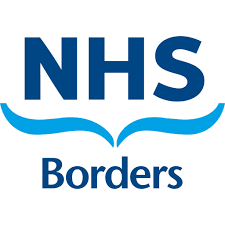Naloxone - protocol for the management of opioid induced respiratory depression

Objectives
Naloxone is a competitive pure opioid antagonist at mu, delta and kappa opioid receptors. It is non-selective and will antagonise all the effects of opioid receptor stimulation. This may precipitate withdrawal symptoms in patients on long term opioid therapy or who have substance use disorder.
Complications of naloxone therapy include acute pain (due to reversal of analgesia), tachycardia, hypertension, tachypnoea, arrhythmias, cardiac failure and pulmonary oedema. The latter may occur as an idiosyncratic reaction unrelated to dose.
| NALOXONE BY INTRAVENOUS INJECTION for OPIOID OVERDOSE – HIGH DOSE REGIMEN (when rapid naloxone is needed to reverse potentially life-threatening effects) | |
| CHILD 1 month - 11 years | CHILD 12 -17 years and ADULT ≥ 18 years |
|
|
| Further doses may be required if respiratory function deteriorates following initial response | |
| NALOXONE BY INTRAVENOUS INJECTION for OPIOID OVERDOSE – LOW DOSE REGIMEN (if risk of acute opioid withdrawal, or if need continued therapeutic effect eg. postoperative/ in palliative care) | |
| CHILD 1 month - 11 years | CHILD 12 -17 years and ADULT ≥ 18 years |
|
|
| Further doses may be required if respiratory function deteriorates following initial response | |
Points to Note
Naloxone has a shorter duration of action than most opioids. If respiratory depression is successfully treated with naloxone it is important that monitoring continues, to ensure that any subsequent respiratory depression (due to residual opioid) is detected, after the rapid decline in naloxone blood levels. If repeated doses are required a naloxone infusion (see BNF) should be considered rather than intermittent boluses. Senior help is recommended if an infusion is being considered, with support and monitoring involving medical HDU or ICU. Naloxone infusion prescriptions can be found in ICU, ward 5 (these are 2 different protocols) and also on Toxbase (Toxbase login is H34, password is 664 HGR).
If IV access is difficult to achieve, consider intramuscular Naloxone injection as a rescue measure.
Period of observation required after naloxone administered will depend on the duration of action of the opioid; 6 hours observation suggested for shorter acting agents, 12 hours observation for longer acting or modified release versions.
Consider withholding oxygen in this patient group to facilitate detection of respiratory depression that may manifest as a drop in oxygen saturations, a deterioration that may otherwise be masked by use of supplemental oxygen.
For out of hospital opioid overdoses, especially if opioids are used recreationally, it may be undesirable and deemed safer for all involved to aim for adequate respiratory effort and acceptable oxygen saturations rather than a GCS of 15 (certain patient groups may become unmanageable if all opioid effects are reversed, and self discharge from the hospital before it may be safe for them to do so).
In substance use disorder, or opioid toxicity seen in chronic pain or palliative care consider providing a naloxone home kit (including training) for use by patient or family should opioid toxicity recur (review by relevant teams is also suggested).
For out of hospital opioid overdoses, considerable doses of naloxone may be required and stocks of naloxone may become rapidly depleted, and need replenishing.
For neonates (<1 month of age) please see Scottish Perinatal Guidance
https://www.perinatalnetwork.scot/guidance/neonatal-guidance/local-regional-drug-monographs/

